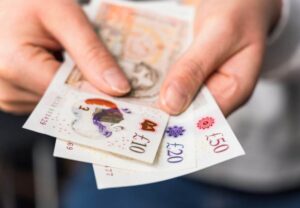Each year, when April rolls around, British stock market investors start thinking about their Stocks and Shares ISAs.
The new tax year allows a fresh £20,000 of tax-free investments into a wide range of assets. From investment trusts and exchange-traded funds (ETFs) to gold and bonds, the options seem endless.
Please note that tax treatment depends on the individual circumstances of each client and may be subject to change in future. The content in this article is provided for information purposes only. It is not intended to be, neither does it constitute, any form of tax advice. Readers are responsible for carrying out their own due diligence and for obtaining professional advice before making any investment decisions.
However, for income-minded investors, the go-to option is almost always dividend shares. These fantastic stocks pay out a regular income in the form of cash or shares, which can then be withdrawn or reinvested.
Over time, a large accumulation of dividend-paying shares can result in a significant amount of daily passive income. With an extra £100 a day, an overworked employee could reduce their workload and spend more time with family. Unattached adventurers could quit their day job and hit the road, enjoying a life of freedom, fun and travel!
But while that dream’s possible, it requires dedication to a strict investment strategy. Depending on each individual’s financial situation, it may take several decades to achieve.
Let’s have a look at how a well thought-out investment strategy can deliver financial freedom.
Calculating yields
Dividend income can be calculated as a yield, or percentage of an investment. The average on the FTSE 100 is 3.5%, but many dividend-focused portfolios achieve 7% or more.
One example I think investors should consider is the UK property developer Taylor Wimpey (LSE: TW.). Its yield is around 8.6%, typically fluctuating between 6% and 9%.
Unfortunately, it was forced to pause dividends during the 2008 financial crisis. This shows its sensitivity to market downturns, and there’s a risk that it may have to cut dividends again in a similar situation. The highly competitive UK housing market’s another risk, with rivals like Barratt Redrow and Persimmon vying for a larger market share.
However, since reinstating dividends in 2011, they’ve increased from 0.38p per share to 9.46p — a growth rate of almost 20% a year! That reveals an impressive dedication to shareholder returns, and with the shares down 12% this year, it has an attractive forward price-to-earnings (P/E) of 13.2.
By combining several shares with yields between 5% and 9%, an investor could achieve an average of 7%.
Doing the maths
To earn £100 a day (£36,500 a year), an average 7% portfolio would need to hold £521,000. Woah! With that kind of money, an investor could buy and rent a property for £100 a day. But a portfolio is far easier to manage and with much lower overheads.
So how would a beginner investor hope to build up that much money? Research shows that over the past decade, the average rate of return on a Stocks and Shares ISA is over 9%. This includes both dividends and price gains combined.
If an investor invested £400 a month (or £4,800 a year) in a 9% portfolio, it would take almost 26 years to reach £521k. At that point, the money could be rebalanced into a dividend portfolio with an average 7% yield, paying regular income without denting the pot.
This is a realistic timeframe for an investor with an appropriate long-term mindset, taking into account that actual returns may vary wildly from this example.
This post was originally published on Motley Fool







